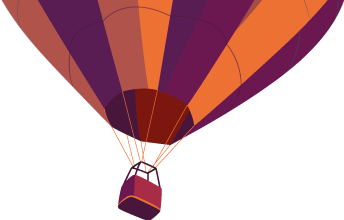-
 Univers
Univers
-
 Ebooks
Ebooks
-
 Livres audio
Livres audio
-
 Presse
Presse
-
 Podcasts
Podcasts
-
 BD
BD
-
 Documents
Documents
-
- Cours
- Révisions
- Ressources pédagogiques
- Sciences de l’éducation
- Manuels scolaires
- Langues
- Travaux de classe
- Annales de BEP
- Etudes supérieures
- Maternelle et primaire
- Fiches de lecture
- Orientation scolaire
- Méthodologie
- Corrigés de devoir
- Annales d’examens et concours
- Annales du bac
- Annales du brevet
- Rapports de stage
La lecture à portée de main
170 pages
English
Le téléchargement nécessite un accès à la bibliothèque YouScribe
Tout savoir sur nos offres
Tout savoir sur nos offres
170 pages
English
Le téléchargement nécessite un accès à la bibliothèque YouScribe
Tout savoir sur nos offres
Tout savoir sur nos offres

Description
EASERA 1.1
EASERA Tutorial
By Software Design Ahnert GmbH, Berlin.
11/01/2006 EASERA Tutorial - Contents
Contents
EASERA TUTORIAL........................................................................................................................................................1
CONTENTS.........................................2
OVERVIEW........................................6
Preface6
EASERA vs. EASERA Pro............6
LESSON 1: EVALUATING A MEASUREMENT .........................................................................................................9
THE VIEW & CALC PAGE.................11
THE IMPULSE RESPONSE..................13
Zooming in.................................13
FREQUENCY RESPONSE....................14
Overlay......................................................................................................................................................................16
REVERBERATION TIME.....................17
SPEECH INTELLIGIBILITY.................18
LESSON 2: LIVE..............................19
SELECTING THE SOUNDCARD...........20
THE LIVE PAGE................................22
Channel selection.......................22
Diagram selection......................23
Bandwidth..................................23
Frequency weighting..................24
Presentation...............................24
Mouse Cursor.............................24
LESSON 3: PERFORMING A MEASUREMENT................................ ...
EASERA Tutorial
By Software Design Ahnert GmbH, Berlin.
11/01/2006 EASERA Tutorial - Contents
Contents
EASERA TUTORIAL........................................................................................................................................................1
CONTENTS.........................................2
OVERVIEW........................................6
Preface6
EASERA vs. EASERA Pro............6
LESSON 1: EVALUATING A MEASUREMENT .........................................................................................................9
THE VIEW & CALC PAGE.................11
THE IMPULSE RESPONSE..................13
Zooming in.................................13
FREQUENCY RESPONSE....................14
Overlay......................................................................................................................................................................16
REVERBERATION TIME.....................17
SPEECH INTELLIGIBILITY.................18
LESSON 2: LIVE..............................19
SELECTING THE SOUNDCARD...........20
THE LIVE PAGE................................22
Channel selection.......................22
Diagram selection......................23
Bandwidth..................................23
Frequency weighting..................24
Presentation...............................24
Mouse Cursor.............................24
LESSON 3: PERFORMING A MEASUREMENT................................ ...
Sujets
Informations
| Publié par | Shawyog |
| Nombre de lectures | 152 |
| Langue | English |
| Poids de l'ouvrage | 5 Mo |
Extrait
EASERA 1.1
EASERA Tutorial
By Software Design Ahnert GmbH, Berlin.
11/01/2006
EASERA Tutorial - Contents
Contents
EASERA TUTORIAL........................................................................................................................................................1
CONTENTS.........................................2
OVERVIEW........................................6
Preface6
EASERA vs. EASERA Pro............6
LESSON 1: EVALUATING A MEASUREMENT .........................................................................................................9
THE VIEW & CALC PAGE.................11
THE IMPULSE RESPONSE..................13
Zooming in.................................13
FREQUENCY RESPONSE....................14
Overlay......................................................................................................................................................................16
REVERBERATION TIME.....................17
SPEECH INTELLIGIBILITY.................18
LESSON 2: LIVE..............................19
SELECTING THE SOUNDCARD...........20
THE LIVE PAGE................................22
Channel selection.......................22
Diagram selection......................23
Bandwidth..................................23
Frequency weighting..................24
Presentation...............................24
Mouse Cursor.............................24
LESSON 3: PERFORMING A MEASUREMENT.......................................................................................................25
SELECTING AND CALIBRATING A CHANNEL ....................................................................................................................26
Calibrating the microphone ......................................................................................................................................29
STIMULATING SIGNAL......................31
CHECKING THE LEVEL.....................33
Calibrating the faders................34
STARTING THE MEASUREMENT........34
Averaging...................................35
LESSON 4: WHAT IS AN IMPULSE RESPONSE? ....................................................................................................36
WHAT IS A DIRAC?..........................37
What is the Dirac impulse good for? ........................................................................................................................39
THE IMPULSE RESPONSE IN ROOM ACOUSTICS.................................................................................................................40
IMPULSE RESPONSE OF LOUDSPEAKERS ..........................................................................................................................44
Adding up signals......................................................................................................................................................47
Crossover frequency at 1kHz.....48
The impulse response in practice..............................................................................................................................49
LESSON 5: AVERAGING AND ADDING MEASUREMENTS.................................................................................52
ADDING DATA.................................53
Frequency resolution and phase behavior ................................................................................................................54
Page 2
EASERA Tutorial - Contents
Complex Vector.........................................................................................................................................................54
When do we use which option....56
DATA AVERAGING...........................56
Speech intelligibility...................56
Other acoustical quantities........57
Frequency response57
LESSON 6: FILTERING AND WINDOWING ............................................................................................................58
OCTAVE AND ONE-THIRD OCTAVE SPECTRA ...................................................................................................................59
One-third octave spectra............61
WINDOWING....................................62
Time-shifting a curve.................62
Setting the window.....................63
Filtering.....................................65
WINDOWING THE DISPLAY..............................................................................................................................................65
Window types.............................66
LESSON 7: DISPLAYING RESULTS...........................................................................................................................68
CREATING OVERLAYS......................69
The Overlay navigator page.......70
Select Overlay............................71
Add To Overlay..........................72
Display Active Only...................72
CURSORS.........................................73
The List of Cursors.....................74
DIAGRAM REGION............................75
Full.............................................75
Zooming ....................................................................................................................................................................76
View Limits.................................76
EXPORTING DIAGRAMS....................78
CHANGE LEGEND............................78
LESSON 8: PROCESSING..............80
MATHEMATICAL OPERATIONS.........81
Relative calculation values .......................................................................................................................................82
Remove DC................................84
DISPLACEMENTS..............................84
Move Arrival to Zero..................87
EDITING SEQUENCE.........................88
Processing for any new measurement.......................................................................................................................89
LESSON 9: MEASUREMENTS AT DIVERSE ROOM POSITIONS........................................................................91
FRAUENKIRCHE DRESDEN ..............................................................................................................................................92
Realization of the measurements92
EVALUATION OF THE MEASUREMENTS............................................................................................................................93
The reflections............................93
Echo criterion94
The reverberation time...............94
Frequency response...................96
Some acoustical values..............97
Speech intelligibility97
THE SOUND REINFORCEMENT SYSTEM98
Averaging curves........................99
LESSON 10: WATERFALL DIAGRAMS ..................................................................................................................101
CREATING A WATERFALL DIAGRAM..............................................................................................................................102
Page 3
EASERA Tutorial - Contents
Positioning of the diagram......................................................................................................................................102
Level peaks at the end of the diagram.....................................................................................................................103
Two-dimensional view..............103
FINE ADJUSTMENT OF THE PRESENTATION....................................................................................................................104
Frequency range and smoothing.............................................................................................................................104
Time range...............................104
Level range105
Slices or grid............................105
DETAIL EXAMINATIONS WITH WATERFALL DISPLAY.....................................................................................................107
SPECTROGRAM..............................109
LESSON 11: SPEECH INTELLIGIBILITY ...............................................................................................................110
THE MODULATION TRANSFER FUNCTIONS111
THE REGISTER PAGE RESULTS.......112
CONSIDERING AMBIENT NOISE......................................................................................................................................113
Considering masking effects....114
CUSTOM FREQUENCY WEIGHTING..114
THE MODULATION TRANSFER INDEX (MTI)..................................................................................................................115
LESSON 12: EXPLANATION OF FURTHER MEASURING QUANTITIES .......................................................116
DIAGRAMS OF THE TIME DOMAIN..117
Impulse response......................117
ETC (log-squared and envelope) ............................................................................................................................117
Schroeder Integral...................118
Step Response...........................118
Energy Sum..............................119
Weighted Energy......................119
Echogram................................................................................................................................................................120
Echo (Speech and Music).........120
DIAGRAMS OF THE FREQUENCY DOMAIN ......................................................................................................................122
Magnitude................................122
Smoothed..................................122
Phase........................................123
Sum and average......................124
Group delay .................................................................................................................................................
-
 Univers
Univers
-
 Ebooks
Ebooks
-
 Livres audio
Livres audio
-
 Presse
Presse
-
 Podcasts
Podcasts
-
 BD
BD
-
 Documents
Documents
-
Jeunesse
-
Littérature
-
Ressources professionnelles
-
Santé et bien-être
-
Savoirs
-
Education
-
Loisirs et hobbies
-
Art, musique et cinéma
-
Actualité et débat de société
-
Jeunesse
-
Littérature
-
Ressources professionnelles
-
Santé et bien-être
-
Savoirs
-
Education
-
Loisirs et hobbies
-
Art, musique et cinéma
-
Actualité et débat de société
-
Actualités
-
Lifestyle
-
Presse jeunesse
-
Presse professionnelle
-
Pratique
-
Presse sportive
-
Presse internationale
-
Culture & Médias
-
Action et Aventures
-
Science-fiction et Fantasy
-
Société
-
Jeunesse
-
Littérature
-
Ressources professionnelles
-
Santé et bien-être
-
Savoirs
-
Education
-
Loisirs et hobbies
-
Art, musique et cinéma
-
Actualité et débat de société
- Cours
- Révisions
- Ressources pédagogiques
- Sciences de l’éducation
- Manuels scolaires
- Langues
- Travaux de classe
- Annales de BEP
- Etudes supérieures
- Maternelle et primaire
- Fiches de lecture
- Orientation scolaire
- Méthodologie
- Corrigés de devoir
- Annales d’examens et concours
- Annales du bac
- Annales du brevet
- Rapports de stage
Signaler un problème
YouScribe
Le catalogue
Le service
© 2010-2024 YouScribe





